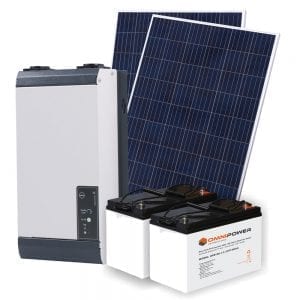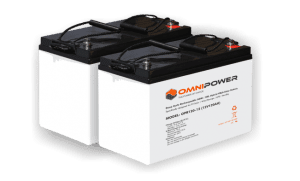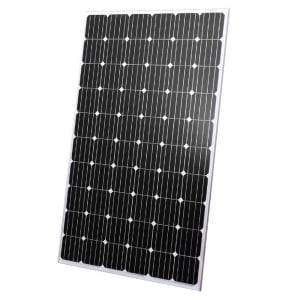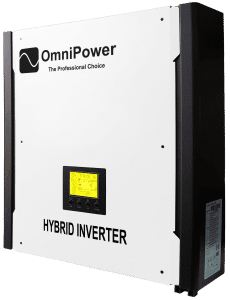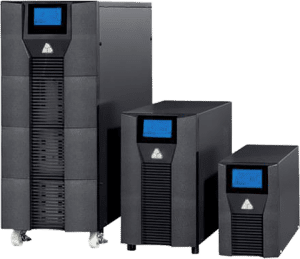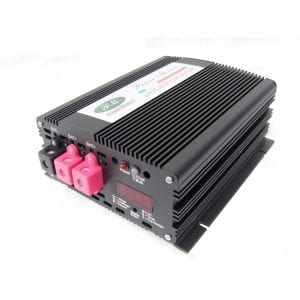Class 1 – (10/350) LIGHTNING CURRENT ARRESTERS which can withstand direct lightning
Typical surge handling ability must be 12.5kA (10/350) per phase.
Whenever a building has external lightning protection such as a mast, or conductors on the building, Class 1 lightning current arresters are required.
DEHNport® Single Phase (click here to view product data sheet)
DEHNbloc® Three Phase (click here to view product data sheet)
These units are designed to withstand direct lightning surge currents and are very robust devices, but on their own cannot clamp the voltage to low enough levels to protect sensitive electronics. Thus Class 1 lightning current arresters must always be used in conjunction with Class 2 surge arresters (8/20). Please note that when using a Class 2 surge arrester in conjunction with a Class 1 lightning current arrester you require a minimum of 10 –15 meters of cable between the units for de-coupling. There are special coils available, like the DEHNbridge® , which can be used to simulate 15m of cable.
If you did not use a Class 2 surge arrester in conjunction with the Class 1 lightning current arresters, surge up to 3kV could enter the system and the surge arresters would not operate thus damaging sensitive electronics.
Class 2 – (8/20) SURGE ARRESTERS, to protect against induced surge currents
DEHNguard® 275 and Copa ST 280
In all cases you must install a minimum of a Class 2 surge arrester in the main electrical distribution board.
The SANS 10142-1:2003 requires that these surge arresters must withstand a nominal surge current of 5kA and a peak surge current of 10kA. Experience has shown this to be inadequate.
The IEC requires a nominal surge current rating of 10kA and 25kA peak surge current.
All surge arresters must have a disconnection mechanism with a visual indication showing end of life, this can be a mechanical flag or a light. Whenever a building has external lightning protection such as a mast, or conductors on the building, Class 1 lightning current arresters are required.
Class 1 & 2 – (8/20) COMBINATION SURGE ARRESTERS, to protect against induced surge currents
DEHNventil® TT (25/100 kA) (10/350)
To overcome the problem of co-ordination of Class 1 and Class 2 arresters a combined surge arrester has been developed which eliminates this problem. The DEHNventil® TT makes use of pre-triggering technology which is a combination Class 1 and Class 2 arrester in 1 x packaging. The main advantage of this unit is that it can be used in all applications and offers complete protection and co-ordination with Class 3 arresters that may be installed within the equipment.
A further advantage of this combination is that it halves the clamping voltage Phase to Neutral when compared to the standard method of installing surge arresters from each Phase and Neutral to Earth and it can be used on all types of wiring applications, TNS, TN-C-S and TT earthing systems. This means you can install the DEHNventil® TT in a container electrical distribution board and have complete protection.
These units can take a direct strike and limit the voltage to less than 1,5kV as required by SANS 10142-1:2003.
DEHNguard® TT (40kA) (8/20)
In cases where a very high level of protection is required but Class 1 is not a requirement we recommend that a DEHNguard® TT be installed. This unit consists of 3 x 40kA Class 2 surge arresters from Phase to Neutral as well as 1 x 12,5kA Class1 arrester Neutral to Earth.
The main advantage of this combination is that it halves the clamping voltage Phase to Neutral when compared to the standard method of installing surge arresters from each Phase and Neutral to Earth and it can be used on all types of wiring applications, TNS, TN-C-S and TT earthing systems.
Class 3 – (8/20) SURGE ARRESTERS, to protect against induced surge currents
DEHNrail FML 230V
When using Class 3 surge arresters there must always be Class 2 surge arresters installed upstream to ensure that the units will not be overstressed.
These units are typically 5kA (8/20) devices and are used to dissipate any surges that may be induced between the electrical distribution board and the equipment.
Class 3 surge arresters without internal disconnecting mechanisms may only be used in circuits that are supervised by earth leakage devices.
Facts about lightning in South Africa
-
- It is a fact that the highveld region of South Africa and Lesotho have amongst the highest lightning strikes per square km per annum in the world.
- On average every square km of South African highveld and Natal receives 7 direct lightning strikes per annum.
- The facts are a direct or indirect lightning strike within a 1,5km radius of your home or office can generate as much as 120 million volts and up to 180 000 Amps, sending lethal surges ripping through power cables and telephone lines. The core temperature of a lightning strike is as high as 20 000 deg C or five times as hot as the surface of the sun.
- Statistics prove that as much as 80% of problems on electronic equipment are associated, directly or indirectly, with lightning and overvoltage surges.
Click here for a technical explanation on lightning protection.

